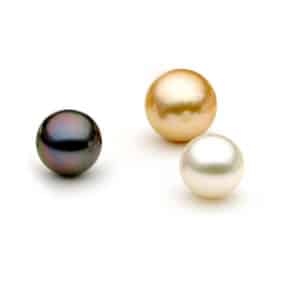
finest and rarest
stones today

Discover the timeless allure of Volle Jewellery’s exquisite loose pearls, where nature’s most elegant creations meet the artistry of fine jewellery craftsmanship. Our collection of loose pearls unveils a world of luminescent beauty and endless possibilities, allowing you to curate your own bespoke masterpiece.
Each pearl, carefully selected for its lustre, shape, and size, embodies the essence of sophistication and grace. Whether you’re seeking to create a stunning pearl necklace, a pair of elegant earrings, or a one-of-a-kind statement piece, Volle Jewellery offers the finest loose South Sea pearls to inspire your creativity. Visit our Sydney CBD store to shop loose pearls that encapsulate the essence of timeless elegance and grace.
When you buy loose pearls with Volle Jewellery, you have endless opportunities to craft unique and personalised jewellery pieces that reflect your true style.
Discover our extensive range of loose pearls and create the perfect piece that reflects your individual style and taste.
Whether you come to us with a custom design in mind or have a pre-prepared piece, our skilled artisans and designers are here to bring your unique vision to life.
Plan your visit to Volle Jewellery to view our collection and shop loose pearls in Sydney.
Let our South Sea pearls be the canvas to showcase your unique story.
The four different types of pearls are:
South Sea Pearls: There are three types of South Sea Pearls: Black Tahitian, Australian White and Gold South Sea Pearls from the Philippines. These pearls are celebrated for their exceptional size and luxurious appeal. South Sea pearls are among the largest pearls available, with sizes ranging from 9 to 20 millimetres. They exhibit a radiant, satin-like lustre and are renowned for their natural colours, including creamy white, silver, and golden hues. The larger size and exceptional quality of South Sea pearls contribute to their reputation as some of the most coveted pearls in the world.
Pearls are formed inside certain species of mollusks, such as oysters and mussels, as a defence mechanism against irritants. When a foreign object, such as a grain of sand or parasite, enters the mollusk, it secretes layers of nacre (a combination of calcium carbonate and protein) around the irritant, gradually forming a pearl.
Absolutely – cultured pearls are real pearls. They are formed through a process called pearl cultivation, where humans intentionally introduce an irritant into a mollusk to stimulate the pearl-forming process. When you buy loose pearls that are cultured, you are receiving pearls with the same organic composition as natural pearls, with the only difference being the introduction of the irritant by human intervention.
Loose pearls are graded based on several factors, including their size, shape, lustre, surface quality, colour, and matching. The grading criteria may vary slightly depending on the type of pearl. The grading system allows for a standardised assessment of a pearl’s quality and helps determine its value in the market.
Our loose South Sea pearls are sourced from reputable pearl farms in Australia, French Polynesia and Philippines.
Whether you’re caring for pearl pendants, pearl earrings or pearl rings, it is essential to handle and care for your jewellery properly to ensure their longevity. Avoid exposing your pearl rings to harsh chemicals, perfumes, or lotions, as they can damage the delicate surface. Clean your pearl rings gently with a soft cloth after each wearing to remove any oils or residue. Store them separately from other jewellery to prevent scratching, and avoid exposing it to excessive heat or prolonged sunlight.
Read our guide for caring for pearls to find out more about how to care for your pearl rings.
Designing jewellery pieces featuring loose pearls opens up a world of creative possibilities. Here are some design tips to consider:
Consult with Our Experts: At Volle Jewellery, our experienced jewellery designers are here to assist you in bringing your vision to life. Whether you’re looking for a classic, contemporary, or entirely bespoke design, we can provide expert guidance and recommendations to ensure your loose pearls shine in their full glory.